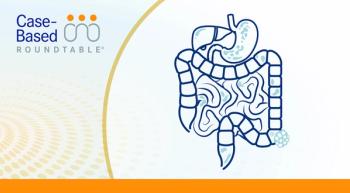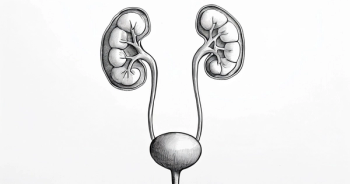
FDA Grants Perioperative Pembrolizumab Priority Review in HNSCC

The FDA granted priority review to pembrolizumab for neoadjuvant and adjuvant use in head and neck squamous cell carcinoma, based on KEYNOTE-689 trial data.
- The FDA has accepted and granted priority review to a supplemental biologics license application (sBLA) for pembrolizumab (Keytruda).
- This application seeks approval for its use as a neoadjuvant treatment, followed by adjuvant therapy in combination with standard-of-care radiotherapy, with or without cisplatin, and then as monotherapy for maintenance in patients with resectable, locally advanced head and neck squamous cell carcinoma (HNSCC).
- A Prescription Drug User Fee Act target action date for the application has been set for June 23, 2025, by the FDA.
The FDA accepted and granted priority review to a sBLA seeking the approval of pembrolizumab as neoadjuvant treatment, then as adjuvant therapy plus standard-of-care radiotherapy with or without cisplatin, and then as monotherapy as maintenance for the treatment of patients with resectable, locally advanced HNSCC.1
Topline findings from a
Additional data from the study showed there to be a trend toward improved overall survival (OS) with pembrolizumab, but statistical significance was not reached in patients with a PD-L1 combined positive score (CPS) of 10 or greater at the time of the analysis.2 OS will also be evaluated at the next interim analysis. Pembrolizumab’s safety profile was consistent with that observed in prior studies, and no new safety signals were reported.
"The standard of care for patients with resectable locally advanced HNSCC has remained the same for over 2 decades, representing a significant unmet need for new treatment options,” said Marjorie Green, MD, senior vice president and head of Late-Stage Oncology, Global Clinical Development, Merck Research Laboratories, in a press release. “Based on the compelling results of the KEYNOTE-689 trial, we hope to reduce the risk of recurrence and disease progression in earlier stages of disease. We look forward to working with the FDA to potentially bring [pembrolizumab] to these patients as soon as possible.”
The safety profile of pembrolizumab was similar to that seen in prior studies. There were no new safety signals identified.
With this, a target action under the Prescription Drug User Fee Act date has been set for June 23, 2025, by the FDA.1
About the KEYNOTE-689 Study
In the randomized, active-controlled, open-label KEYNOTE-689 trial, experts are evaluating treatment with neoadjuvant pembrolizumab followed by adjuvant pembrolizumab plus radiotherapy, with or without cisplatin, and maintenance pembrolizumab alone for the treatment of patients aged 18 years and older with newly diagnosed, resectable stage III or IVA locally advanced HNSCC.1
The study enrolled approximately 704 patients, who were randomly assigned 1:1 to receive either pembrolizumab or standard therapy. In the investigational arm, patients were administered 200 mg of intravenous (IV) pembrolizumab every 3 weeks for 2 cycles as neoadjuvant treatment. This was followed by adjuvant pembrolizumab every 3 weeks for 15 cycles, combined with standard radiotherapy. High-risk patients in this arm also received 100 mg/m² of IV cisplatin every 3 weeks for 3 cycles.
In the control arm, patients did not receive neoadjuvant therapy prior to surgery. Post-surgery, they underwent adjuvant radiotherapy, with high-risk patients also receiving cisplatin and low-risk patients receiving radiotherapy alone.
The study enrolled patients with histologically confirmed, resectable, nonmetastatic squamous cell carcinoma. Eligible participants included those with stage III, T4, N0-2, M0 human papillomavirus (HPV)–positive oropharyngeal primary tumors, stage III or IVA HPV-negative oropharyngeal cancers, or stage III or IVA primary tumors of the larynx, hypopharynx, or oral cavity. Additionally, patients were required to have an ECOG performance status of 0 or 1.
EFS was the primary end point of the study and the secondary end points were OS, mPR rate, pathological complete response rate, and safety. All of the secondary end points were stratified by PD-L1 CPS status.1
Full results from KEYNOTE-689 will be presented at an upcoming medical meeting and shared with regulatory authorities. Further, the study has an estimated completion date of September 10, 2026.3
REFERENCES
FDA grants priority review to Merck’s application for KEYTRUDA® (pembrolizumab) plus standard of care as perioperative treatment for resectable locally advanced head and neck squamous cell carcinoma. News release. Merck. February 25, 2025. Accessed February 25, 2025. https://tinyurl.com/2kmefvjn
Merck’s Keytruda (pembrolizumab) met primary endpoint of event-free survival (EFS) as perioperative treatment regimen in patients with resected, locally advanced head and neck squamous cell carcinoma. News release. Merck. October 8, 2024. Accessed February 25, 2025. https://tinyurl.com/86vmtmad
Study of pembrolizumab given prior to surgery and in combination with radiotherapy given post-surgery for advanced head and neck squamous cell carcinoma (MK-3475-689). ClinicalTrials.gov. Updated February 7, 2025. Accessed February 25, 2025. https://clinicaltrials.gov/study/NCT03765918








































